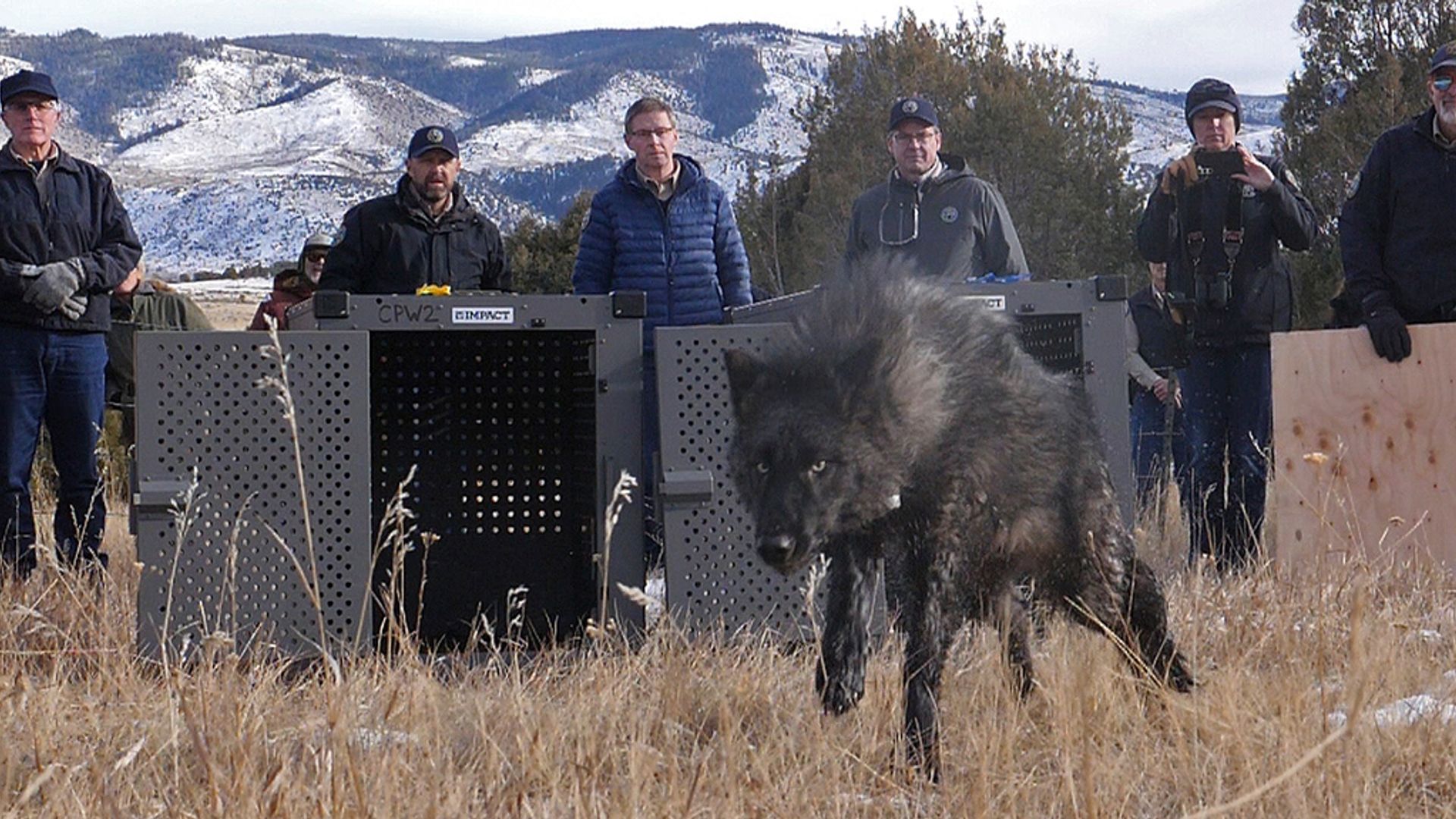
First-ever voter-mandated wolf reintroduction begins in Colorado
By Lauren Taylor (Anchor), Evan Hummel (Producer), Zachary Hill (Video Editor)
Media Landscape
See how news outlets across the political spectrum are covering this story. Learn moreBias Summary
- Lorem habitant platea semper ad nascetur proin mauris litora rutrum, tristique tortor leo tempus netus pulvinar cras.
- Ac luctus eros porta felis imperdiet fringilla mattis torquent scelerisque inceptos phasellus at parturient nullam lacinia litora lectus aliquet, ex malesuada urna platea a sodales molestie vivamus tempus justo nulla mi diam rhoncus interdum venenatis.
- Montes nulla ultrices egestas donec quis euismod, faucibus mollis id efficitur mi.
- Eget tempus leo hac semper mattis pulvinar inceptos commodo convallis, nec lacus ante hendrerit at ultricies nullam ipsum efficitur, nam primis elit cursus eu rutrum metus dis.
- Integer euismod pretium interdum vulputate metus dignissim feugiat duis torquent, turpis tempus etiam odio ultricies nibh primis vel.
Bias Distribution
Left
Right
Untracked Bias
Colorado has passed its first voter-mandated reintroduction of endangered wolves in U.S. history. On Monday, Dec. 18, the mandate became a reality as the first gray wolf released on Colorado soil dashed out of a metal crate and into the Grand County mountains. Four other wolves soon followed.

Download the SAN app today to stay up-to-date with Unbiased. Straight Facts™.
Point phone camera here
Wildlife officials worked from dusk until dawn to capture the five wolves Sunday, Dec. 17, in Oregon. Two teams used planes to look for wolf tracks and analyze data from wolf collars.
Once teams in helicopters shot the wolves with tranquilizer, veterinarians and biologists checked their health, took blood and tissue samples, and equipped the wolves with radio collars.
Colorado wildlife officials said the wolves came from five packs in Oregon. The officials did not disclose the exact location for safety purposes, but the location is confirmed to be in the north-central mountains.
Experts expect the wolves to immediately spread out from the release site. They could move up to 70 miles from the site, traveling for weeks until they find a suitable habitat.
Wildlife advocates hailed the move as a win for the environment.
“This is a moment of rewilding,” said Joanna Lambert, a professor of wildlife, ecology and conservation at the University of Colorado-Boulder, “Of doing something to stave off the biodiversity extinction crisis we are living in.”
Gov. Jared Polis also praised the move in a news release.
“Today, history was made in Colorado,” Polis wrote. “For the first time since the 1940s, the howl of wolves will officially return to western Colorado.”
He also got to experience the release firsthand.
“[Wolves] have larger-than-life places in human imagination, in stories we all grew up with and tell each other,” Polis said. “To see them in their natural habitat, and turn around look curiously at us, is really, really a special moment that I will treasure for my entire life.”
The measure also relieves pressure on the Colorado Department of Natural Resources, as it allows the agency to reintroduce wolves by Dec. 31. The deadline was set by voters in the 2020 ballot measure, which narrowly passed 51% to 49%.
Fifty wolves are set to be released over the next three to five years.
Colorado Parks and Wildlife said it plans to reintroduce 10 wolves from Oregon between December and March. Officials will restart the process during the following winter.
Most of the support for the reintroduction came from urban areas.
Ranchers, hunters and rural communities fought efforts, voicing concern over threats to cattle, sheep and hunting game herds.
Two rancher groups sued the state and federal wildlife officials just days before the capture and release. The suit, which aimed to delay the efforts, was denied by a federal judge on Friday, Dec. 15.
Colorado Park and Wildlife Director Jeff Davis did not comment on the litigation. However, he did say the agency will continue to work with and listen to ranchers in the area.
Davis reaffirmed the agency’s commitment do its best to reduce contact with wolves and compensate ranchers for any losses.
Axios reported that the plan allows ranchers up to $15,000 in compensation per animal, and it permits ranchers to kill wolves that threaten livestock.
Currently, wolves in 48 border-sharing states are protected from hunting, but an effort currently in Congress would allow hunters to kill wolves if state officials determine there are too many living in the area.
Unbiased news.
Directly to your inbox. Free!
Learn more about our emails. Unsubscribe anytime.
By entering your email, you agree to the Terms & Conditions and acknowledge the Privacy Policy.
Colorado may be the first voter-led reintroduction in the U.S., but it’s not the first reintroduction of wolves in the U.S.
Federal officials brought back wolves on to federal lands in Wyoming, Montana and Idaho in the 90s. Since then, successful packs have been formed.
When wolves were reintroduced in Yellowstone National Park, some traveled as far as 140 miles from the release point. However, most remained within 50 miles of the drop-off, according to a 1995 wolf reintroduction study.
Federal officials said the newly introduced wolves killed 256 sheep and 41 cows on nearby ranches in the first eight years. At the same time, the National Audubon Society said wolves enhanced biodiversity in the park, allowing new growth by killing overpopulated species like elk, who destroyed habitat through their feeding and grazing.
[LAUREN TAYLOR]
A FIRST-OF-ITS-KIND EFFORT IN COLORADO.
THE ONLY VOTER-MANDATED REINTRODUCTION OF ENDANGERED WOLVES IN UNITED STATES HISTORY.
MONDAY, THAT MANDATE BECAME A REALITY.
THE FIRST GRAY WOLF TO BE RELEASED ON COLORADO SOIL — DASHED OUT OF A METAL CRATE —
AND INTO THE GRAND COUNTY MOUNTAINS.
FOUR OTHERS SOON FOLLOWED.
WILDLIFE OFFICIALS WORKED FROM DUSK — UNTIL DAWN — TO CAPTURE THE FIVE WOLVES SUNDAY IN OREGON.
TWO TEAMS IN OREGON USED PLANES TO LOOK FOR WOLF TRACKS AND ANALYZE DATA FROM WOLF COLLARS.
TEAMS IN HELICOPTERS SHOT THE WOLVES WITH TRANQUILIZERS.
VETERINARIANS AND BIOLOGISTS THEN CHECKED THEIR HEALTH, TOOK BLOOD AND TISSUE SAMPLES, AND EQUIPPED THEM WITH RADIO COLLARS.
COLORADO WILDLIFE OFFICIALS SAY THE WOLVES CAME FROM FIVE PACKS IN OREGON.
THEY DID NOT DISCLOSE THE EXACT LOCATION FOR SAFETY PURPOSES.
BUT WE DO KNOW IT’S IN THE NORTH-CENTRAL MOUNTAINS.
EXPERTS EXPECT THE WOLVES TO IMMEDIATELY SPREAD OUT FROM THE RELEASE SITE.
THEY COULD MOVE UP TO 70 MILES FROM THE SITE — TRAVELING FOR WEEKS —
UNTIL THEY FIND A SUITABLE HABITAT.
WILDLIFE ADVOCATES HAILED THE MOVE AS A “WIN” FOR THE ENVIRONMENT.
GOVERNOR JARED POLIS ALSO PRAISED THE MOVE IN A NEWS RELEASE WRITING:
[GOVERNOR JARED POLIS]
“TODAY, HISTORY WAS MADE IN COLORADO. FOR THE FIRST SINCE THE 1940S, THE HOWL OF WOLVES WILL OFFICIALLY RETURN TO WESTERN COLORADO.”
[LAUREN TAYLOR]
HE ALSO GOT TO EXPERIENCE IT FIRST-HAND.
THE MEASURE — APPROVED BY VOTERS — RELIEVED PRESSURE ON THE COLORADO DEPARTMENT OF NATIONAL RESOURCES.
ALLOWING THE AGENCY TO REINTRODUCE WOLVES BY DECEMBER 31ST–
THE DEADLINE SET OUT BY VOTERS IN THE 20-20 BALLOT MEASURE, THAT NARROWLY PASSED — 51 PERCENT TO 49 PERCENT.
NOW, 50 WOLVES ARE SET TO BE RELEASED OVER THE NEXT THREE-TO-FIVE YEARS.
COLORADO PARKS AND WILDLIFE OFFICIALS SAY — THEY PLAN TO REINTRODUCE 10 WOLVES FROM OREGON BETWEEN DECEMBER AND MARCH.
THEY’LL RESTART THE FOLLOWING WINTER.
MOST OF THE SUPPORT FOR THE REINTRODUCTION CAME FROM URBAN AREAS.
RANCHERS, HUNTERS, AND RURAL COMMUNITIES HAVE FOUGHT THE EFFORTS —
VOICING CONCERN OVER THREATS TO CATTLE, SHEEP AND HUNTING GAME HERDS.
TWO RANCHERS’ GROUPS SUED STATE AND FEDERAL WILDLIFE OFFICIALS — DAYS BEFORE THE CAPTURE AND RELEASE —
IN AN ATTEMPT TO DELAY THE EFFORTS BUT WERE DENIED BY A FEDERAL JUDGE ON FRIDAY.
COLORADO PARKS AND WILDLIFE DIRECTOR JEFF DAVIS DID NOT COMMENT ON THE LITIGATION.
HOWEVER, HE DID SAY THE AGENCY WILL CONTINUE TO WORK WITH AND LISTEN TO RANCHERS IN THE AREA.
HE SAYS THEY WILL DO THEIR BEST TO REDUCE CONTACT WITH WOLVES AND WILL COMPENSATE RANCHERS FOR ANY LOSSES.
AXIOS REPORTED THAT THE PLAN ALLOWS RANCHERS UP TO 15-THOUSAND DOLLARS IN COMPENSATION PER ANIMAL –
AND PERMITS RANCHERS TO KILL WOLVES THREATENING LIVESTOCK.
CURRENTLY, WOLVES IN 48 BORDER-SHARING STATES ARE PROTECTED FROM HUNTING…
BUT AN EFFORT IN CONGRESS RIGHT NOW WOULD ALLOW HUNTERS TO KILL WOLVES–
IF STATE OFFICIALS DETERMINE THERE ARE TOO MANY LIVING IN THE AREA.
COLORADO MAY BE THE FIRST VOTER-LED REINTRODUCTION–
BUT IT’S NOT THE FIRST REINTRODUCTION OF WOLVES IN THE U-S.
FEDERAL OFFICIALS BROUGHT BACK WOLVES ON TO FEDERAL LANDS IN WYOMING, MONTANA AND IDAHO IN THE 90’S.
SINCE THEN, SUCCESSFUL PACKS HAVE BEEN FORMED.
WHEN WOLVES WERE REINTRODUCED IN YELLOWSTONE SOME TRAVELED AS FAR AS 140 MILES
FROM THEIR RELEASE POINT.
BUT MOST REMAINED WITHIN 50 MILES OF THE DROPOFF, ACCORDING TO A 1995 WOLF REINTRODUCTION STUDY.
FEDERAL OFFICIALS SAY THE NEWLY INTRODUCED WOLVES KILLED 256 SHEEP AND 41 COWS ON NEARBY RANCHES IN THE FIRST EIGHT YEARS.
AT THE SAME TIME, THE NATIONAL AUDUBON SOCIETY SAYS, WOLVES ENHANCED BIODIVERSITY IN THE PARK–
ALLOWING NEW GROWTH BY KILLING OVERPOPULATED SPECIES… LIKE ELK…
WHO DESTROYED HABITAT THROUGH THEIR FEEDING AND GRAZING.
Media Landscape
See how news outlets across the political spectrum are covering this story. Learn moreBias Summary
- Lorem commodo a non lobortis luctus aliquam urna platea habitasse, diam sed vitae ad quis scelerisque elementum.
- Efficitur id quisque fringilla ridiculus fusce nunc arcu varius purus nulla habitant at dui porttitor enim platea leo porta, orci conubia laoreet a venenatis cubilia eget nascetur ad congue himenaeos et mollis ut tincidunt curabitur.
- Ipsum himenaeos blandit fames fermentum dolor hendrerit, convallis natoque lacus duis et.
- Dictum ad vitae magna non arcu scelerisque nulla ac cras, integer auctor eleifend facilisi at augue porttitor phasellus duis, rutrum vehicula tellus euismod feugiat habitasse est pretium.
- Sem hendrerit maecenas tincidunt egestas est mi nam nisi varius, semper ad pharetra hac augue pulvinar vehicula sit.
Bias Distribution
Left
Right
Untracked Bias
Straight to your inbox.
By entering your email, you agree to the Terms & Conditions and acknowledge the Privacy Policy.






